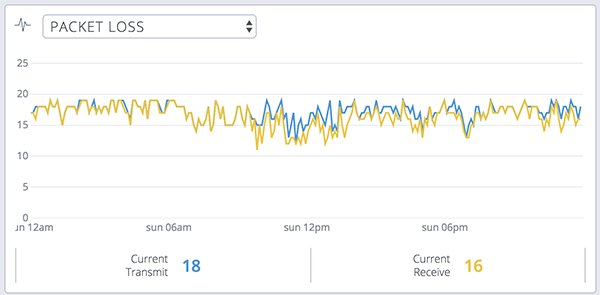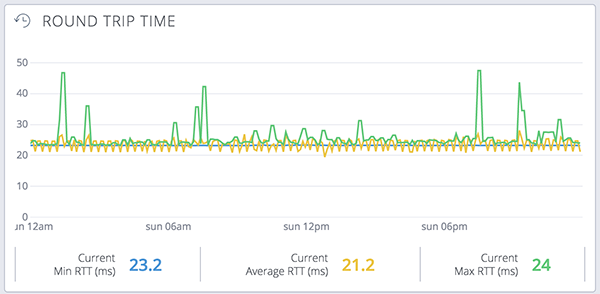No doubt you’ve received that call from a client: “My internet is slow!” Or maybe, “My internet is down!”
With Auvik’s internet connection check, you can get out in front of such issues so you’re aware of the problem—and potentially have a solution—before the client calls.
The connection check, also known as the cloud ping, is tied to two Auvik alerts.
- Internet Connection Is Lost lets you know when we can no longer reach your client’s default gateway. Auvik classifies this as a critical alert.
- The Default Route Change alert lets you know that your client’s primary internet connection has failed over to a secondary connection. Auvik classifies this as a warning alert.
Internet Connection Is Lost
Here’s how James Ritter, founder and CEO of Pulse Technology Solutions, uses the cloud ping to quickly help clients:
“We’re in the lightning capital of the world down here [in Florida] and when we have bad weather in the area, I can tell with Auvik when our internet providers are going up or down from the gateways going up and down. Then we can proactively call the ISP and say, “Look, are you having an outage?” That helps alleviate stress from the client, because we already know what happened and have an ETA for the internet being back up. That’s extremely valuable for us.”
Jordan Farmer at Dash2 Group echoes James’ comments:
“Auvik really helps with knowing about internet outages well before a user even picks up the phone and calls us. I highly recommend Auvik to anyone.”
Default Route Change
The Default Route Change alert can also provide valuable intel. As we’ve discussed before, warning alerts can point you to potential bigger issues that are brewing. In this case, you’ll want to action the alert to make sure the primary connection is eventually restored to service and the route is changed back to that primary connection.
Before Cadan Technologies had Auvik in place, Daniel Rogers found out the hard way what can happen when you’re not alerted to such route changes.
“One of our clients who had two internet connections had an outage—because their primary connection had been down for three months and we didn’t know it. We just didn’t know because all the systems were reporting in and the provider doesn’t bother to tell the customer and the customer didn’t know.
So Auvik being able to detect both gateways and tell us when the primary is down and the secondary took over, or the secondary’s down and the primary’s still up, is huge because now we can address that problem before it becomes a problem.”
Is it the network… or is it the ISP?
Auvik’s internet connection check can also help with troubleshooting network problems. You can see packet loss and round trip time charts for each interface, giving you a view into jitter and latency.


For example, if you have a VoIP network experiencing issues, these two graphs are a handy way to see if the quality problem is related to the internal network or something to do with the ISP. High levels of either latency or jitter could indicate it’s ISP related.
ISPs can measure to their equipment—the final router before the client—but the “last mile” between them and the physical client is where things can go sideways. Is it the firewall? is it inside the network? Is it the link from the firewall to that ISP router? Without data, it’s hard to pinpoint the culprit. But if you can show a jump in latency or 50% packet loss, then you have the data to get your ticket with the ISP escalated to someone who can dig in and troubleshoot.
You’ll find more information on using the internet connection check in the Auvik Knowledge Base.


